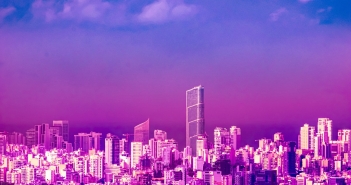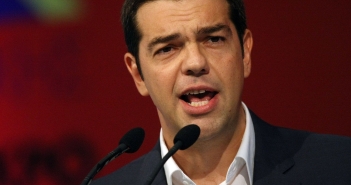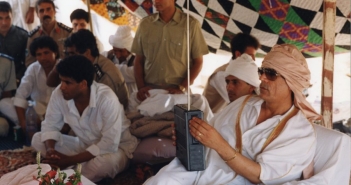The future of a generation born during over eight years of conflict in Syria is under threat. More than half of all school-aged Syrian children living as refugees in neighbouring countries do not enjoy access to a formal education. In this two-part series humanitarian activist and author Bruna Kadletz addresses a global educational crisis for school-aged refugees.
Istanbul, May 2016
What are the immediate and long-term consequences of living without a fundamental human right: access to a quality education?
In the basement of an old building in the district of Fatih, a district with the highest concentration of Syrian refugees in Istanbul, Turkey, I first contemplated this multifaceted question.
I travelled for the first time to Turkey in May 2016. The country is host to the highest concentration of refugees in the world. Almost four million people have sought protection in Turkish territory, including 3.6 million registered Syrian refugees, as well as approximately 365,000 from other parts of the world.
At the time of my first visit, the refugee crisis was at its peak. This prompted me to volunteer for two months in Small Projects Istanbul, an independent NGO operating a community centre for displaced persons. The organisation offers Turkish and English lessons for adults and children, as well as providing employment opportunities for women. It is a safe haven for men, women and children fleeing for their lives from a war-torn country.
The centre operates from the basement of an old building in Fatih. I well remember the day my mind turned to one of the most devastating outcomes of wars and conflicts: the lack of educational opportunities for displaced children and youth.
Leila
It was a Saturday morning when I first met Leila, a sweetly smiling nine-year old Syrian girl with long, silky hair. Leila was attending Arabic classes with her elder sisters Amal, and younger one Hanan. I sat next to her and watched as she copied the lesson from the board. When she had finished, I asked her to read what was written in her notebook.
Leila looked at me with her expressive eyes, and timidly said, ‘I can´t read.’
The import of her words didn´t sink in immediately, assuming she had misunderstood me. I repeated the question more slowly this time, thinking she hadn’t been able to translate what was written into English. Of course she could read her native language I assured myself. Using the same words, however, she replied in almost perfect English, ‘I can´t read in Arabic.’
Once more, her answer puzzled me. To my mind, it didn´t make sense. How could Leila be able to communicate perfectly in both Arabic and English, copy the lesson from the board and, yet, not be able to read it?
After telling me her story, I understood.
This young girl had never attended school. The Syrian War began when she was just four years of age, depriving Leila and her siblings access to formal education, let alone a normal childhood. She had learned how to communicate normally, and even copy the shapes of the words from the board onto her notebook. But she had no knowledge of the individual letters or how they sounded.
The meaning of the sentences she was copying down were a mystery to her. War had left her illiterate. Amidst all the other problems and challenges, her education had not been prioritised.
Living as refugees in Turkey, Leila and her sisters could not access formal education. Since the girls did not speak Turkish, they could not enrol in a public school. The community centre, where they took Arabic classes, was the closest thing they experienced to a school environment.
Ahmed
Public schools and temporary education centres are the two main options for refugee children who wish to continue their studies. Yet more than half a million school-aged Syrian refugees in Turkey don´t access these options and are left without an education.
A week after meeting Leila I learned about a fourteen-year-old boy in a similar situation. Ahmed was also out of school, but for different reasons. After fleeing the conflict he and his family settled in Istanbul. His father carried on into Europe, leaving the boy as the family’s primary breadwinner.
Ahmed worked exhausting shifts in a backpack factory to sustain his mother, siblings and disabled uncle. Yet the squalid working conditions and low wages hadn’t take away his spark. He used to spend his days off at the community centre learning English, playing football and trying his best to live a normal adolescence. Remarkably, he always had a smile on his face.
These stories reflect a global trend. For millions of refugee children bearing the human cost of war and armed conflict, education is a distant dream rather than a lived reality. According to the UNHCR´s latest report on refugee education, ‘Stepping Up: Refugee Education in Crisis’, more than 3.7 million school-aged refugee children and youth are out of school.
The report provides other worrying statistics: only 24% of refugees enrol in secondary education, compared to a global average of 84%; just 3% of refugees have access to higher education.
Another statistic attracted my attention from the report: approximately 2.9 million school-age refugee children, and youth, live in just five countries, namely Turkey, Lebanon, Pakistan, Sudan and Uganda. These are developing countries in need of international support to cope with the refugee education crisis.
‘Zones of vulnerability’
There are many barriers preventing refugee children and youth from attending school, including language, absence of documentation, and a lack, or absence altogether, of teachers and schools. Refugees also face restrictive school enrolment policies, lack of income to pay for schooling and social stigma.
A lack of educational opportunities, alongside inadequate integration policies, place refugee communities in zones of vulnerability, leading to further exclusion, cycles of poverty and low prospects of finding suitable employment opportunities. These are a few of the consequences of being denied the right to a quality education.
How can we regenerate the losses of generations adversely affected by wars and conflicts and ensure a fundamental right to education is vindicated?
Filippo Grandi, the UN’s high commissioner for refugees, says the solution to the crisis lies in the need to ‘invest in refugee education or pay the price of a generation of children condemned to grow up unable to live independently, find work and be full contributors to their communities.’
Investment in refugee education goes beyond including school-age refugee in national education systems and providing further funding for UN agencies. Host countries must ensure cultural and linguistic inclusion, as well as creating opportunities for parents to resume their careers, enjoy access to paid employment and provide assistance to entrepreneurs.
Education is a major stepping stone for societal evolution, human development and psychological liberation. With an education a refugee can transcend the dehumanising labels imposed on them and potentially realise their full potential; children confined in refugee camps and urban slums can develop a sense of dignity and belonging. Moreover, education protects children from exploitation, forced marriage and child labour. Education is the pathway for a safer and brighter future.
To invest in refugee education is to invest in the future of humanity.




